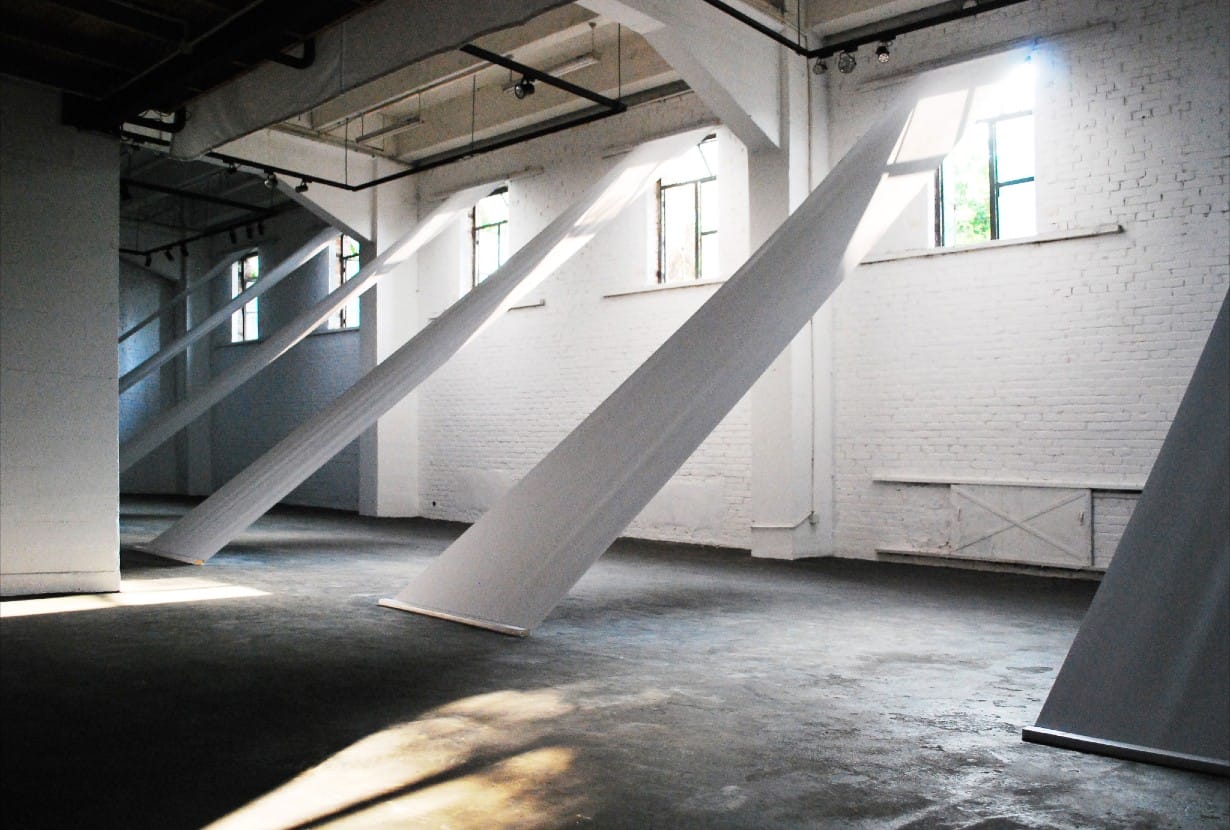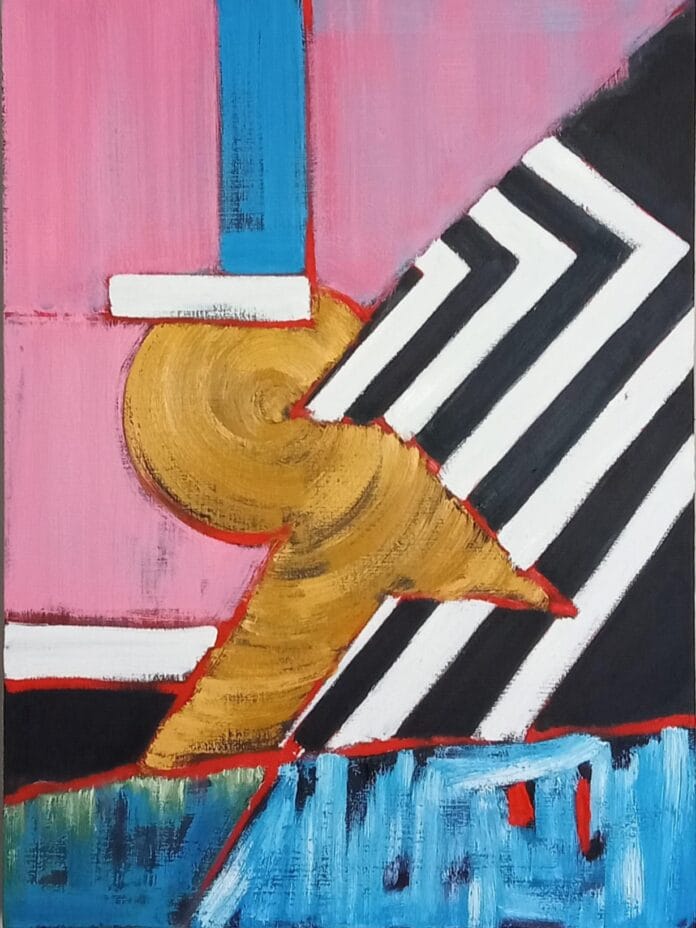Antony Clarkson is an international contemporary artist whose practice spans installation, sculpture, and painting, each exploring the intersections between perception, space, and memory. His work is defined by a commitment to opening up new ways of seeing and experiencing the world, offering audiences opportunities to pause, reflect, and reconsider their relationship with familiar environments. Whether through playful sculptural forms, site-specific installations, or abstract paintings rooted in memory, Clarkson’s art situates itself in dialogue with both physical space and the inner landscapes of the mind.
Artistic Vision and Practice
At the heart of Clarkson’s practice is the desire to create contemplative spaces. He invites observers to look beyond the surface of the everyday and discover new dimensions of meaning. His installation work, for example, is never conceived in isolation but always in response to its specific site. By engaging directly with its surroundings, each piece encourages viewers to reassess their relationship with space, architecture, and environment.
Clarkson’s sculptures take a more playful approach, reimagining familiar objects by translating them into unexpected and unfamiliar forms. In doing so, they disrupt routine patterns of perception and offer fresh encounters with the ordinary. His paintings, on the other hand, are more introspective, drawing on memory and abstraction. While abstract in form, they often evoke a sense of déjà vu or familiarity, prompting personal connections in the viewer’s own recollections.

His artistic influences span a wide spectrum of 20th- and 21st-century masters, including Francis Bacon and Chaim Soutine’s visceral explorations of form and emotion, Richard Smith’s experiments with painting and dimensionality, Lucio Fontana’s radical slashing of canvases, and James Turrell’s immersive studies of light and perception. Equally important are the practices of Mike Nelson and Phyllida Barlow, whose installations transform space and material into new experiential worlds. Collectively, these influences converge in Clarkson’s practice, which blends the experimental with the reflective, the playful with the profound.
Biography and Early Influences
Clarkson’s artistic journey began in childhood, where an early attraction to drawing and making naturally evolved into a lifelong passion. His formal education took shape at the Manchester School of Art, where he completed both a BA and an MA in Fine Art in 2009. During this formative period, he cultivated a studio practice while also working as a docent at the Whitworth Art Gallery, an experience that exposed him to diverse artistic practices and helped sharpen his engagement with audiences.
Travel has played an important role in Clarkson’s development as an artist. In 2011, he embarked on a series of international artist residencies that expanded his practice and global perspective. His projects included situation-specific installations at the Sichuan Academy of Fine Arts and the 501 Artspace in Chongqing, China; the Finnish Academy of Fine Arts in Helsinki, Finland; Monster Truck Gallery in Ireland; and the Centre for Chinese Contemporary Art (CFCCA) in Manchester, UK. Each residency became an opportunity to engage deeply with new cultural contexts while refining his ability to produce installations that respond directly to place and environment.
Manchester Years: Mirabel Studios and Lecturing
While based in Manchester, Clarkson became a co-director at Mirabel Studios Gallery, a hub for contemporary art in the city. This role allowed him not only to continue his own artistic practice but also to contribute to the wider artistic community, fostering dialogue and supporting the work of other emerging and established artists.
Alongside his studio work, Clarkson pursued a career in education, serving as Course Coordinator and Senior Lecturer at The Independent Art. His teaching practice mirrored his artistic one: rooted in exploration, questioning, and an emphasis on how art engages with both the material and the conceptual. For Clarkson, teaching was never separate from his practice but an extension of it, another way of creating space for others to see and think differently.
Scotland: Athole House Studio
In 2018, Clarkson relocated to Scotland, establishing Athole House Studio as his base of operations. This move marked a new phase in his career, providing both physical space and creative solitude to develop new bodies of work. From Scotland, he continued to exhibit internationally and maintain his lecturing commitments, expanding his presence in both national and international art circles.
The environment of Scotland, its landscapes, its histories, and its unique atmospheres provided fertile ground for Clarkson’s ongoing exploration of memory, perception, and environment. Athole House became both a retreat and a launch point for new creative ventures.
Relocation to the USA: Cardinal Red Studio
Most recently, Clarkson has relocated to Cardinal Red Studio in Virginia, USA. This transition represents not only a geographical shift but also the beginning of a new artistic chapter. At Cardinal Red, Clarkson is currently developing a body of work centered on the concept of Apophenia, the human tendency to perceive patterns and connections in random or unrelated data.
Through this exploration, Clarkson continues his investigation into the ways humans construct meaning and navigate perception. The idea of apophenia resonates deeply with his broader practice, connecting to themes of memory, abstraction, and the transformation of the familiar. His upcoming exhibitions based on this work promise to expand his dialogue with audiences, encouraging them to confront their own instinctive search for meaning in art and life alike.
Conclusion
Antony Clarkson’s career reflects a dynamic interplay between place, perception, and artistic inquiry. From his early days in Manchester to residencies across the globe, from directing gallery spaces to lecturing the next generation of artists, and now to his current base in Virginia, Clarkson has consistently sought to expand the boundaries of how art engages with its audience.
His installations, sculptures, and paintings invite viewers to step out of the ordinary and into a space of contemplation where memory, abstraction, and playfulness converge. As his new work on apophenia emerges, Clarkson continues to affirm his position as an artist deeply invested in how we perceive, interpret, and ultimately make sense of the world around us.


